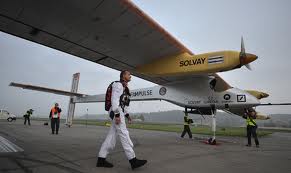By Jacob Gordon
The cost of electricity is going up (both in dollars and in
environmental and health impacts) and it doesn't show any signs of doing
otherwise. About half of the energy in the American grid is coal generated. We
won't bore you with what you already know: coal is a really stinky, dangerous,
nasty, unsustainable, and silly way to make power.
By using less energy, and greening the electricity that we do use, we can
lighten our footprint immensely. The subject of electricity and its environmental
impacts is a massive one and we can't cover every corner of it here; hopefully,
this brief guide can offer some solid suggestions for greening your electricity
and use thereof.
Audit yourself
A home energy audit is a way to
inventory your home's energy use, where energy is lost, and where it can be
saved. You can do an energy audit yourself or get a pro. Many utilities also
offer home and business energy audits for free.
Reduce your use
The lowest hanging fruit just begging
to be picked are simple energy-saving practices. They're also the most cost
effective. Top tasks include:
a. Replace your light bulbs with compact fluorescent light
bulbs (CFLs) or even cutting-edge light emitting diodes (LEDs).
b. Turn off lights and other devises when they're not
needed.
Eliminating electronics that sleep on a standby setting;
they continue to pull a current even when "turned off."
"Wall warts," those clunky AC adaptors on many
power cables, pull current, too, so those should be taken out of the wall when
not in use -- this is also known as phantom power. Your best bet is a
"smart" power strip, or a power strip that can be turned off at night.
Clothes driers gobble up a lot of power, so line drying can
be a great energy saver.
Put your house on a diet
Homes consume an enormous
amount of energy, especially in heating and cooling, and American homes consume
around six times the world average. Once you've audited your home for energy
use (even if you haven't) some simple moves can cut your electricity bill. Keep
your house cool with natural ventilation instead of air conditioning as much as
possible. Use in-room, ceiling, or whole-house fans to move air throughout the
house. Blocking sunlight during hot hours of the day can help lower your
cooling load. If your house uses electricity for water heating, wrapping your
water tank in an insulating blanket can save on power. Also, if your house is
heated with electricity, see How to Go Green: Heating for more
in-depth advice.
































